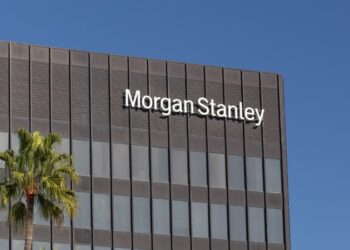In a new paper titled Social Risks – for financial services business, Actuaries Institute member and former APRA deputy chairman Ian Laughlin has pointed to the public and media scrutiny the financial services industry had recently been subjected to and questioned business’ risk management functions.
“How can it be that institutions spend huge amounts of money, resources and intellect on managing risk, and still find themselves being castigated by the press, politicians and social media for unacceptable attitudes and behaviour?” wrote Mr Laughlin.
“This begs a question: is conventional risk management working as it should in the contemporary world?”
In the paper, he argued financial institutions were failing to address a new kind of risk he defined as ‘social risk’.
“These are the risks to a business that come from changing social attitudes and norms, underpinned by new social capabilities,” he explained.
Businesses were not adequately dealing with newly emerging risks such as ‘tolerance risk’ that came from rapidly shifting social or cultural attitudes and behaviours “catching the business unaware”, such as the mounting intolerance for sexual harassment in workplaces.
Furthermore, ‘generation risk’ – in which different generations had different social norms and attitudes – was failing to be accounted for, the paper said.
The propensity for media to “take an accusation and blow it up into a major story” was defined by Mr Laughlin as ‘fake news risk’, while ‘reverse fake news risk’ was “the risk that a valid concern is dismissed as fake news”.
He added that social media had given tools for the community to respond at a speed more rapidly than ever seen in the past, to the extent that it gave the appearance the financial services industry was performing much worse than before.
“From the sheer weight of publicity, one could get the impression that attitudes and behaviour in the financial services industry have deteriorated sharply in recent years,” Mr Laughlin wrote.
“While that may be true in some specific areas, my own long experience tells me that standards today in many areas are much higher than they were in the past.
“But the community has stepped up in two ways: first, society’s expectations are (rightfully) much higher and tolerance for egregious practices much lower than they once were; secondly, society’s ability to see and to call out unacceptable practices and to highlight poor outcomes has become so much more powerful,” he said.
In order for financial services institutions to adequately address ‘social risks’, new capabilities were needed, Mr Laughlin argued.
“A typical text-book approach involves at least the following broad steps for dealing with risks: identification; assessment, and evaluation against appetite; treatment; and monitoring and reporting,” he said.
“For most risks, these steps can be undertaken systematically and with a good degree of confidence. That may not be so with social risks.”
Mr Laughlin pointed to the concept of risk sensing, as opposed to the risk monitoring, which was often backward-looking, as a way to mitigate risks.
“By ‘risk sensing’, I mean monitoring and interpretation – preferably in real time for practical purposes – of the information that flows from the various ‘sensors’ that a business might [or] should have to provide information about risk,” he wrote.
These ‘sensors’ could be the use of social media or artificial intelligence in order to monitor trends and “assess attitudes as they are expressed”.
Moreover, greater understanding of staff culture was becoming more imperative, given that there is more attention and new expectations on the performance and behaviour of boards and management.
Finally, the burgeoning social risks needed to be more than monitored and potentially required the creation of a new role in a company.
“One could argue that at the heart of this should be a social risk officer, dedicated to the risks that emerge from attitudes and norms in society, how they are changing and the implications for the business,” Mr Laughlin concluded.







